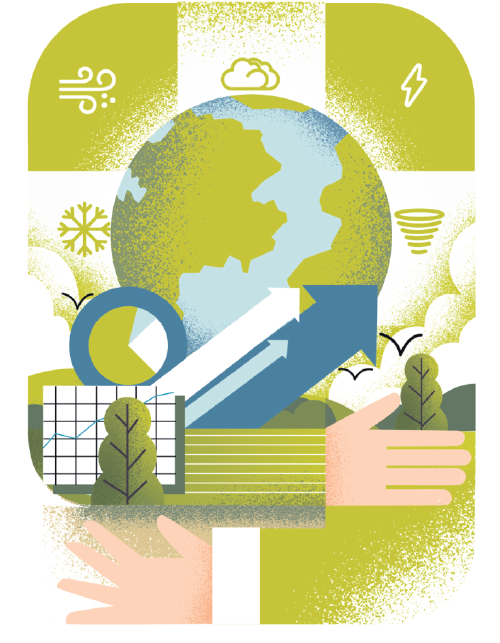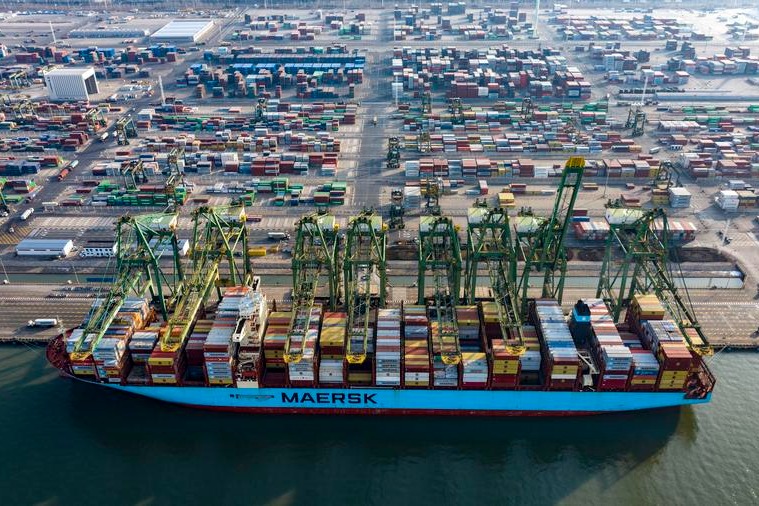Three for all
Improved relations among China, the EU and the US could catalyze and consolidate cooperation on climate issues, and vice versa


In a few days all eyes will be on Glasgow, where the United Nations Climate Change Conference (COP 26) will be held. Some 200 states and regions will be represented, and more than 100 leaders are due to attend.
But China, the European Union and the United States will be the most important participants at the conference, for a simple reason: Together, they are responsible for around 40 percent of global greenhouse gas emissions. Currently, China contributes 28 percent of global greenhouse gas emissions, the US 15 percent and the EU 8 percent. Historically however, a different picture emerges. Over time, the US has contributed 29 percent to all man-made greenhouse gases in the atmosphere, the EU 22 percent and China just 13 percent.
All three have set themselves ambitious emissions reduction goals for the next decade and beyond. In his address to the 2020 UN General Assembly, President Xi Jinping announced that China will peak of greenhouse gas emissions before 2030 and that it will become carbon neutral before 2060. The Joe Biden administration has pledged that the US will reduce its emissions by 50 percent by 2030 and become carbon neutral by 2050. The EU has pledged a reduction of 55 percent by 2030 and to also become carbon neutral by 2050.
Over the past years, China has seen a spectacular development of its low carbon technology. Today, 45 percent of all wind turbines and 72 percent of all solar panels worldwide are produced in China. But while China is clearly a world leader in renewable energy, it is still dependent on coal. In his address to the 2021 UN General Assembly, President Xi stated that China will not build new coal-fired power projects abroad. That is a significant development. Yet the importance of coal within China is considerable. In 2020, China commissioned more than three times as much power from coal than the rest of the world combined. As the concept of "ecological civilization" is enshrined in China's Constitution and has just again been stressed by President Xi in his address at the UN Biodiversity Conference in Kunming, it is to be hoped that the country can be weaned off coal.
The Donald Trump administration left the Paris Agreement, thus putting the sincerity of the US commitment to the fight against climate change in doubt. The Biden administration was quick to reverse that decision and announce ambitious undertakings. The problem with the US is that climate policy is a deeply partisan issue, with Democrats favoring ambitious goals and Republicans much more reluctant to subscribe to deep cuts in greenhouse gas emissions. With the midterm elections just a year away and the next presidential election in 2024, it is difficult to foresee the trajectory of US climate policy over the next decades. That, however, is a requirement if other countries are to be induced to make and implement major commitments.
The EU has been fairly consistent in its climate policy. Its 2021 Climate Law even makes adhering to its targets a legal obligation. The EU's problem, however, is-as so often-the divergence in the views of its 27 member states. While some countries, such as Germany, favor even more ambitious cuts, other countries, in particular those in Central Europe, are more cautious. And whereas Germany regards nuclear power as outdated and plans to switch off all its remaining nuclear reactors by 2022, French President Emmanuel Macron has just announced a new policy under which France, now generating 70 percent of its electricity from its more than 50 nuclear reactors, may add a large number of small modular reactors over the coming years.
The EU and China have long established some degree of cooperation on climate issues. From the 2005 Joint Declaration on Climate Change to the 2018 Leaders' Statement on Climate Change and Clean Energy, there is a good basis on which further cooperation can be built. Collaboration between the US and China can be advanced with the Joint Statement Addressing the Climate Crisis released in spring 2021 as a starting point. The EU and the US also issued a joint statement this year in which both sides committed to greater cooperation to counter the climate crisis.
Such cooperation will be necessary to tackle a number of contentious issues. One of them is the carbon border adjustment mechanism that the EU wants to introduce to stop "carbon leakage". It would essentially be a new tax on goods imported into the EU from countries with less stringent regulations on limiting greenhouse gases. China has already made clear that it does not favor the introduction of new instruments that could hinder trade, and the US, too, is less than enthusiastic.
Yet still larger challenges loom. The World Energy Outlook, recently released by the International Energy Agency, shows that global energy-related emissions, after a short fall due to the COVID-19 pandemic, will rise this year, and it will in absolute terms be the largest increase since 2010. Even if all announced pledges by governments were to be implemented, the demand for natural gas and oil until 2030 would be much higher than required to move toward a net zero scenario. Governments therefore need to do a lot more to fully deliver on their announced pledges.
The lofty goal that the international community has set itself can only be achieved by even more stringent national contributions, strict adherence to these pledges, and close cooperation, in particular among the three major players on climate policy. That, in turn, requires teamwork across the board: One cannot expect fruitful cooperation on climate while rivalry or even hostility on other issues persists.
The author is a former member of the German Foreign Service and a researcher at the German Studies Center at Tongji University. The author contributed this article to China Watch, a think tank powered by China Daily. The views do not necessarily reflect those of China Daily.
Contact the editor at editor@chinawatch.cn
































